#Jirí Barta
Photo
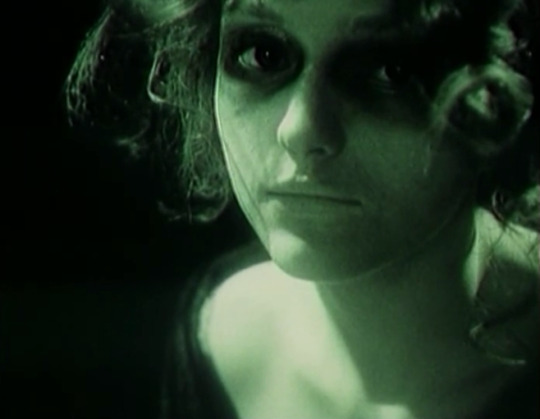

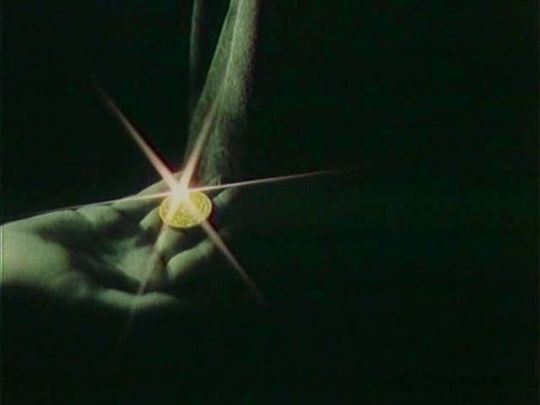

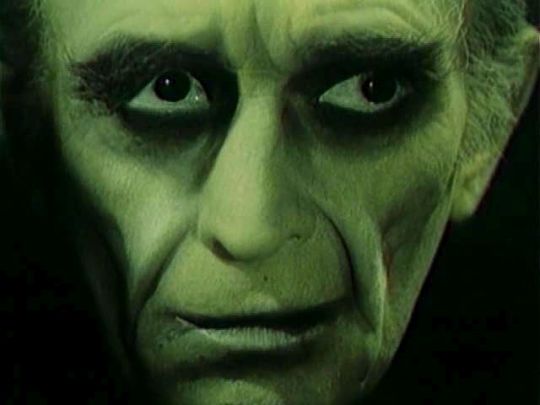


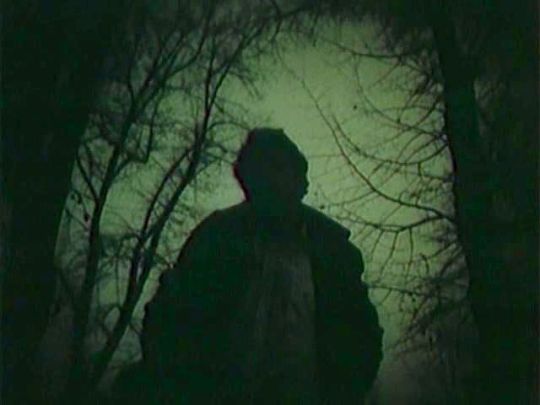


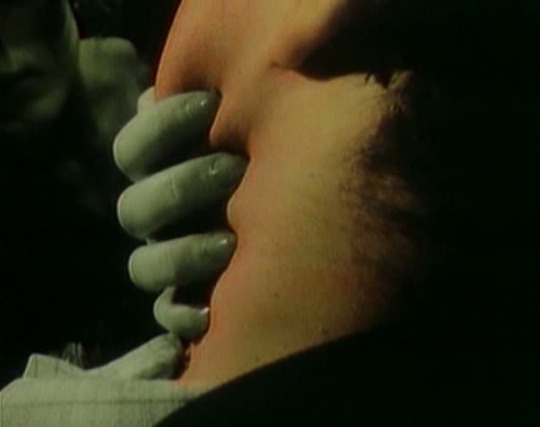
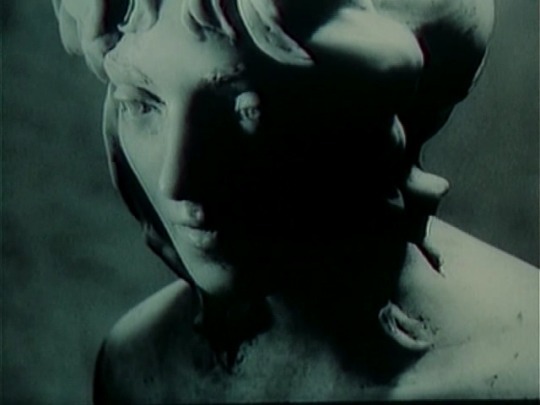
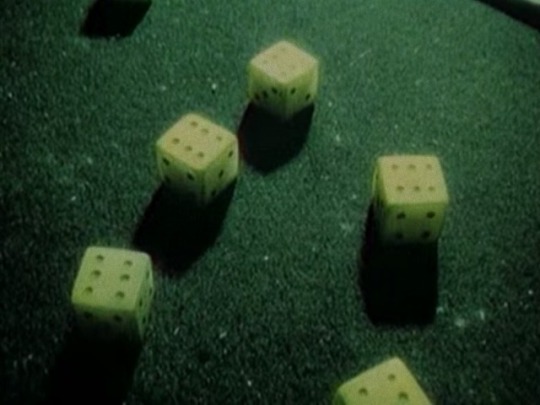

Poslední lup (The Last Theft), 1988. Dir. Jirí Barta
28 notes
·
View notes
Video
vimeo
The Design - Jirí Barta
About Stereotype
https://helloohart.tumblr.com
Animators and urban planners both create worlds, but Czech stop motion specialist Jiří Barta’s ingenious paper cut-out short punctures the stifling architecture of communist housing. Skilled hands blueprint an apartment tower standardized specifications. Envelopes contain the elements of each home. Family dwellings, bachelor pads, scholarly studies and artist studios: different social configurations are permitted but restrained to the same uniform box. A dystopic revision of the REAR WINDOW scenario, THE DESIGN’s darkly comic social critique still has teeth.
#H'Art#helloohart#jirí barta#jirí barta the design#animation#stereotype architecture#stop motion#social critique#darkly comic#czech#specialist#paper cut-out#social configurations#uniform box#dystopic revision#architecture of communist housing#urban planners
0 notes
Video
youtube
Randomly clicking around looking for something to watch, I managed to find a short film I had a fever-dream recollection of and have been looking for ever since: Club of the Discarded by Jirí Barta (1989)
The short uses puppetry and stop-motion animation to tell the story of a bunch of discarded, decaying mannequins that go through the same repetitive motions in imitation of the humans they resemble - the “father” lurching up from his bare mattress, stiffly hugging the “mother” (endlessly stirring a pot of meatballs made of red paint and crumpled balls of newspaper), toppling down the stairs to sit for hours behind a desk in a pigeon-infested room, then staggering back up stairs to collapse on the mattress again. The grandmother pulling feathers from a pillow, while a child mannequin tries endlessly to untangle a wad of yarn. Grandfather banging on the radio and interrupted the tuneless strumming of a harpist, and a collection of dismembered parts furiously, waterlessly scrubbing each other in a bathtub.
And then their dreary, clockwork routine is upset when two workmen drag in a box filled with newer discards . . .
What I love about the film is the incredibly grimy grotesqueness of it all, the painful sound effects, the whole atmosphere of madness. Well worth a watch.
5 notes
·
View notes
Photo

The Vanished World of Gloves, Jirí Barta, 1982
264 notes
·
View notes
Text
https://www.napimagazin.hu/februar-vegen-rendezik-a-budapest-tancfesztivalt/
New Post has been published on https://www.napimagazin.hu/februar-vegen-rendezik-a-budapest-tancfesztivalt/
Február végén rendezik a Budapest Táncfesztivált

A San Francisco-i kortárs balett-társulat, az Alonzo King Lines Ballet lesz a díszvendége az idei Budapest Táncfesztiválnak, amelyet február 20. és március 1. között rendeznek meg a fővárosban.
A fennállásának 35. évfordulóját ünneplő Lines Ballet táncosai a világ minden tájáról meghívott neves zeneszerzőkkel, zenészekkel és vizuális művészekkel együttműködve keltik életre a “koreográfus által megálmodott látomásokat” – közölték a szervezők az MTI-vel.
A társulattól két koreográfiát láthat a közönség: a természet dallamaira készülő Biophonyt és a Sandet, amely Alonzo King és az amerikai jazz nagyjai, Jason Moran és Charles Lloyd együttműködésének eredménye.
A külföldi társulat előadása mellett négy nagy együttes budapesti bemutatója is színesíti a választékot. A táncfesztivál két világhírű film táncszínházi átiratával indul: február 20-án a Győri Balett legújabb darabját, Nathaniel Hawthorne nagysikerű A skarlát betű címet viselő regényének átiratát mutatja be, majd a Miskolci Balett a filmtörténet klasszikusát, a Casablancát viszi színre február 21-én.
A Pécsi Balett alkotásában Bartók Béla A fából faragott királyfijának budapesti bemutatóját tekinthetik meg a tánckedvelők február 23-án, március 1-jén pedig a Szegedi Kortárs Balett mutatja be Juronics Tamás új koreográfiáját, a Federico García Lorca drámáját feldolgozó Bernarda Alba házát a Fesztivál Színház színpadán.
A Magyar Nemzeti Balett most először látható a Budapest Táncfesztiválon: a Total Dance című estre két koreográfus három koreográfiájával készülnek. Johan Inger és Jirí Kylián február 25-én látható alkotásai fontos helyet töltenek be a kortárs tánc nemzetközi világában csakúgy, mint az együttes repertoárján.
A fesztivál zárásaként, március elsején a Vigadóban látható a Badora Társulat Lajtha című produkciója, amelynek színpadi világpremierjére a 2017-es Budapesti Tavaszi Fesztiválon került sor. A koreográfiát Barta Dóra, Harangozó-díjas, érdemes művész készítette a Liszt Ferenc Zeneművészeti Egyetem zenekarának közreműködésével és Ménesi Gergely vezényletével.
0 notes
Photo

The Last Theft (Jirí Barta, 1987) - short film
147 notes
·
View notes
Text
smst318-luyao feng
Name: luyao feng (1246367)
Essay title: Uncanny valley & 3D animation
Date: 19/04/2017
Course: FASS
Word count: 2387
Uncanny valley & 3D animation
Introduction
The uncanny valley effect assumes that people tend to show growing empathy and positive feeling when the object in an animation is made more human until it reaches a threshold that makes people feel creepier, unease or revulsion due to the high resemblance of the object to the human being (McCallum, 2003). In line with the advanced technology, it enables animators to create human-like realistic characters in animation. 3-D technology further enhances the realism of characters in animation. The full motion video, facial and body motion capture techniques and 3D technology have been used to make the characters as realistic as possible (Beane, 2012). Based on the uncanny valley effect, viewers tend to have negative and critical feeling towards human-like characters instead of enjoying (Geller, 2008). Viewers usually experience cognitive dissonance towards the human-like characters if the movement, sounds, emotion and facial expression of the character are made to be too similar to a real human (McCallum, 2003). The objective of this paper is to discuss uncanny effect in relation to 3-D animations.
Uncanny valley concepts
Uncanny is defined as the feeling towards the objects that are presented and made to contain realistic and human-like characteristics (Hanson et al., 2005). It is a feeling and emotional response to the deliberately made human-like characters which blur the distinction between human and un-human objects (McCallum, 2003). In the 3-D animation, it may contain both human-like characteristics in the process of creating and presenting the characters, but also contain symbols that are beyond the reality and realistic common sense and nature. It means that the unrealistic and imaginary objects, activities and context are combined with the highly human-like and realistic characteristics in creating 3-D animation in contemporary world (Tinwell, 2014). It suggests that the mix of realistic and unrealistic factors in 3-D animation not only fulfill the curiosity of human being on exploring the endless possibility of human being and the technology in the future, but also affect viewers’ responses and feelings towards the human-like character and context in 3-D animation (White, McKay, & Pollick, 2007).
Previous literatures identified three major theoretical factors underlying uncanny, which are intellectual uncertainty, surveillance, and the double situation (McCallum, 2003). Intellectual uncertainty is about the link between the insecure feeling and the uncanny (McCallum, 2003). The double situation indicates that uncanny arises when viewers are exposed to both the familiar and unfamiliar/unexpected elements in animation (McCallum, 2003). It needs to contain both sides in order to create uncanny feeling and response. A purely novel object is not able to create uncanny, neither a real human can. Surveillance/control refers to the surveillance feeling and mode (McCallum, 2003). The viewers have high power in the viewing process as they surveillance the context in the animation and have the power and authority to make comments on the characters in the animation.
Uncanny valley effect assumes that people tend to show growing empathy and positive feeling when the object in an animation is made more human until it reaches a threshold that makes people feel creepier, unease or revulsion due to the high resemblance of the object to the human being (Power, 2008). The emotional response to the human-like character has a curve shape which becoming more positive as the character becoming more human-like while suddenly reducing to the bottom (negative response) at a point that the character become highly human-like, and then gradually returning to the positive emotion again (Mäkäräinen, Kätsyri, & Takala, 2014). This uncanny response to human-like characters in 3-D animation shows the paradoxical nature of being repulsed and attracted by the human-like objects and high-tech at the same time, which reflects the curiosity and fear (Hanson et al., 2005).
Uncanny in 3-D animation
Club of the Discarded – puppet animation
The animation featuring puppet can be considered as a type of ‘3-D’ recording. Jirí Barta’s ‘Club of the Discarded’ (1989) is an example of Puppet animation. In this puppet animation, Barta depicts several laid-off old mannequins who are ‘alive’ (Banger, 2016). They can move and have emotion like human being. They live together in an old and abandoned building. Although their lives are seemed to be cracked and broken, they do have the human-like behaviour and emotion. They talk, hug, eat, dance and even have sexual intercourse. Although their appearance show that they are puppet rather than human being, their appearance and behaviour are strange enough to frighten people due to their human-like characteristics. From this animation, viewers tend to experience uncanny in terms of experiencing fear, annoying and negative feelings (Hanson et al., 2005). The appearance and behaviour of puppets in this animation may reach the specific point that triggers the uncanny feeling of viewer due to the controversial boundary between human-like and puppet. All the human-like behaviour of puppets is performed when human are absent. In the animation, some workers come and bring more puppets to the abandoned building, while the puppets pretend to be non-human-like objects at that time. They turn into human-like objects only after workers leave.
This setting contains the three elements of uncanny. It contains intellectual uncertainty as it creates the connection between the uncanny feeling and the uncertain situation. It contains double situation as viewers are familiar with these human-like behaviour, while they are not familiar with the situation that puppets perform these human-like bahviour. The viewers are also at the surveillance position. By fulfilling these three uncanny elements, it can consider viewers would experience uncanny when watching this animation.
This setting also represents the position of human being in contemporary world where are full of manipulated things and objects (Hanson et al., 2005). The people behind the scene control the behavior of puppet. In the modern puppet performances, it suggests that the appearance of puppet is human-like despite it lacks certain human-like characteristics such as realistic skin, hair and facial expression (Mäkäräinen et al., 2014). However, the modern puppet performance usually gives viewers a kind of threatening and anxious feeling because the behaviour of puppets usually makes viewers consider they do not take full control over the contemporary world and technologies. The machines, technologies, projected images and objects are likely unsettled due to the controversial issues and atmosphere they create. This makes people doubt about the mastery of the material world (Tinwell, 2014). The puppet performance usually exists between the material world and mastery. It also argues that the appearance of human-like puppets makes people reconsider whether or not people have the superior power over the material world because every person is going to end up with lifeless objects (White et al., 2007).
Image 1: Jirí Barta - Club of the Discarded (1989)
Final fantasy & The Incredibles
Final Fantasy is a famous Japanese 3-D animation series. The setting is in the year 2065 (Butler & Joschko, 2009). The story is that Aki Ross saves the earth from an invading race from other planets. The storyline actually is not the core of the animation, but the technologies used in the animation itself. Final Fantasy has been considered as one of the most successful and famous anime creates digital 3-D human-like realistic character to date (Butler & Joschko, 2009). The degree of realism of the characters in Final Fantasy has reached the frightening level. The characters in the animation present the human-like flowing hair, skin blemishes, body movement, emotional expression, and even breathing. In contemporary high-budget 3-D animation, the facial expression, response and body movements of a character are pre-recorded by the full motion video, facial and body motion capture techniques, which are then combined and treated by 3D software (Beane, 2012). Although the process of creating human-like character in animation is complex, it has reached the capability to create ultra-realistic animated characters in contemporary world.
Image 2: Final Fantasy
The review and market response to Final Fantasy are generally negative. First, the box office of Final Fantasy was low which contribute to a financial loss of US$52 million (Butler & Joschko, 2009). The low box office cannot cover the high investments on the complex 3-D technologies used to produce this animation. Second and most important is the negative response to the ultra-realistic aesthetics of the animation. It suggests that the technology is the greatest strength of this animation but is also its biggest weakness(Butler & Joschko, 2009). The human-like characters are criticized as the flat, expressionless objects despite they are 3-D and ultra-realistic (Butler & Joschko, 2009). They are considered to be coldness, creepily artificial, and mechanical without real emotion (Butler & Joschko, 2009). This reflects to the uncanny response of viewers as the characters are depicted too real to believe. These characters frightened viewers and made them feel to be threatening by machine.
In the Incredibles (3-D), it depicts a superhero family. The parents Bob and Helen were superheroes who wanted to live a normal life (IMDB, 2017). As Bob did not let the former heroism gone, their family was involved into a series adventures. The aesthetics of the characters differ significantly from those in Final Fantasy though they are both 3-D animation. The characters in the Incredibles emphasize caricature, whereas characters in Final Fantasy focus ultra-realism. The Incredibles do not focus on depicting the appearance of the characters such as flowing hair and skin, while it focuses on exaggerating physical expression and characteristics (Butler & Joschko, 2009). The settings of both animations are in caricatured or unrealistic environment. Although the high-technologies and software such as Shake and Maya are used in developing The Incredibles, it intentionally did not emphasize the ultra-realistic and human-like elements in portraying characters(Butler & Joschko, 2009).
Image 3: The Incredibles
Contrary to the market response of Final Fantasy, The Incredibles had received great market success and positive responses from viewers. The rating of the film on IMDB was around 92% (IMDB, 2017). The screenplay and the animation style had received high ratings. Viewers indicated that they experienced warmth and empathy from the flatness (IMDB, 2017). They considered the characters are realistic but they can feel warmth and kind from their behaviour. Viewers tend to be impressed with the strong and vivid characters and compelling story instead of overwhelming by advanced technologies.
The aesthetic style of Final Fantsy and The Incredibles play key role in affecting the way audiences respond to technologies and characters in animations. The concept uncanny valley can be applied to 3-D animation in relation to aesthetic engagement in characters in animations (Power, 2008). In The Incredibles, characters are cartoonish but they are also acceptable as having many human-like characteristics such as breathing, emotional expression, feelings and problems. They encounter many problems and things that human would encounter in their lives. Although the characters are not depicted to be ultra-realistic, their personality and physical attributes have made viewers engage with these characters. The overweight father Bob encounters problems with his unfulfilling job. The three children had different personality and problems. For example the daughter Violet is an outsider compared to a typical girl in high school. The characteristics and personality of these characters are depicted close to realistic persons in the society that makes viewers to engage with characters and have empathy to the characters (Tinwell, 2014). On the contrary, if these characters are depicted to be ultra-realistic as the technology would achieve, viewers may focus on the technical aspect of characters and may not fully engage with the characters and show empathy with their situation. This may be the reason underlying uncanny in relation to 3-D animation. As in Final Fantasy, viewers may focus on the technical aspect and focus on the problematic aspects of characters instead of the warmness to their humanness. The engagement and empathy issues related to the ultra-realistic animated characters could be another reason to cause uncanny, besides the fear and threatening feeling in relation to the human-like objects (Butler & Joschko, 2009).
Conclusion
In conclusion, this paper discussed uncanny in relation to 3-D animation with the examples from the puppet animation ‘Club of the Discarded’, 3-D animation Final Fantasy and The Incredibles. The uncanny valley effect assumes that people tend to show growing empathy and positive feeling when the object in an animation is made more human until it reaches a threshold that makes people feel creepier, unease or revulsion due to the high resemblance of the object to the human being. Viewers usually experience cognitive dissonance towards the human-like characters if the movement, sounds, emotion and facial expression of the character are made to be too similar to a real human. Viewers could be frightened as they may not distinguish between characters and live actor. The fear and threatening feeling causes negative feeling towards human-like characters. Ultra-realistic characters also make viewers focus on the movement of the character instead of the emotion and warmth to humanness, which avoid viewers engaging with characters and show empathy. As a result, viewers tend to experience uncanny towards ultra-realistic animated characters. This has implications on the future development and aesthetic style of animation.
References
Banger, R. (2016). Jirí Barta - Club of the Discarded - 1989. Retrieved 20th April, 2017, from https://www.youtube.com/watch?v=gdCPdy3wf54
Beane, A. (2012). 3D animation essentials. New York: John Wiley & Sons.
Butler, M., & Joschko, L. (2009). Final fantasy or the Incredibles. Animation Studies, 4, 55.
Geller, T. (2008). Overcoming the uncanny valley. IEEE computer graphics and applications, 28(4), 27-35.
Hanson, D., Olney, A., Prilliman, S., Mathews, E., Zielke, M., Hammons, D., . . . Stephanou, H. (2005). Upending the uncanny valley. Paper presented at the Proceedings of the national conference on artificial intelligence.
IMDB. (2017). The Incredibles. Retrieved 20th April, 2017, from http://www.imdb.com/title/tt0317705/
Mäkäräinen, M., Kätsyri, J., & Takala, T. (2014). Exaggerating facial expressions: a way to intensify emotion or a way to the uncanny valley? Cognitive Computation, 6(4), 708-721.
McCallum, D. (2003). Encountering and countering the ‘uncanny’ in Descartes’s Méditations. French Studies, 57(2), 135-147.
Power, P. (2008). Character Animation and the Embodied Mind—Brain. Animation, 3(1), 25-48.
Tinwell, A. (2014). The uncanny valley in games and animation. New York: CRC Press.
White, G., McKay, L., & Pollick, F. (2007). Motion and the uncanny valley. Journal of Vision, 7(9), 477-477.
0 notes
Video
youtube
Projekt (1981) — Jirí Barta
A short animation.
0 notes
Video
youtube
Disc Jockey - Jirí Barta 1980
0 notes
Video
Jirí Barta- Klub odlozenych (The Club of The Laid Off) (1989) This is the short film that abruptly ended my childhood.
11 notes
·
View notes
Photo
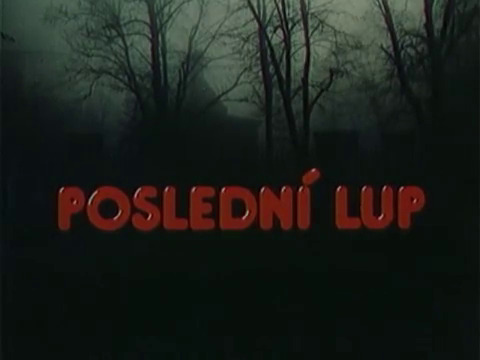









The Last Theft (Jirí Barta, 1987) - short film
34 notes
·
View notes